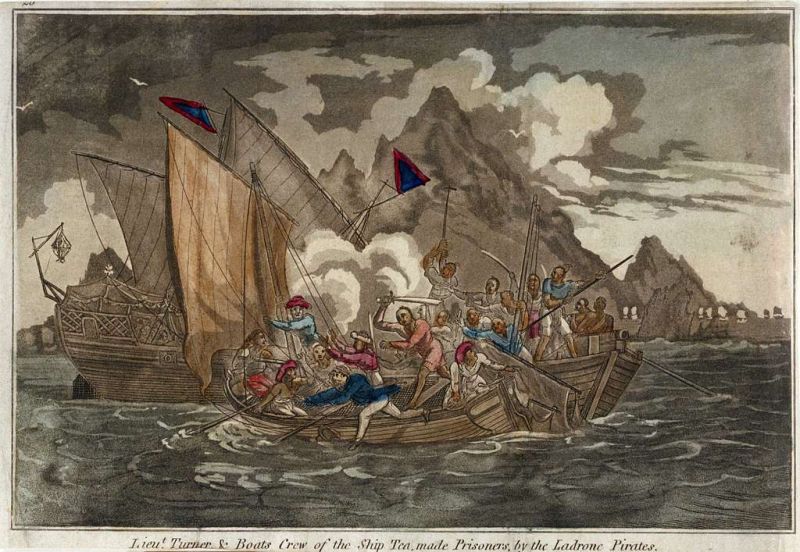Tan Yue
Pirate
From the sixteenth to the twentieth centuries, piracy was a common occurrence, with the formation of numerous large and small strongholds along the southern coast of China to Malacca and Batavia. The islands in the Lingding Channel at the mouth of the Pearl River were particularly notorious for piracy, due to the intricacy of the geography and the long-standing prosperity of maritime trade in the region. The term “pirate” describes groups engaged in illicit activities at sea, operating outside legal and governmental systems. Their illegal economic activities constitute a shadow economy that runs parallel to the legal economic system.
The origins of piracy are quite complex. Scholars generally agree that the notion of pirates and privateering emerged with the advent of colonial trade systems and early globalization. In her book Pirates of the South China Coast: 1790-1810, Dian H. Murray put forth the concept of a "political geography of the water world," which she used to describe how pirates and those who lived by the water survived by crossing boundaries and navigating between multiple political systems. More scholars now tend to see pirates as disruptors of order but also as contributors to early global trade. They incorporated marginalized social groups—such as Tanka (疍) people, fishermen, sailors, and peddlers—into a broader economic system, sharing and distributing wealth. Their forms of social organization also demonstrated another vision or possibility of freedom. as David Graeber wrote in Pirate Enlightenment, or the Real Libertalia.
The compositions of pirate crews were complex, including fishermen during low season, Tanka people struggling to make a living, failed maritime merchants, and others whom the government had labeled "poor and unruly." Like fishing, piracy could be seen as a seasonal part-time job. The story of the legendary Qing-era Tanka woman and pirate wife Zheng Yi Sao (or Ching Shih's wife) and her adopted son Zhang Baozai is still widely told. Her identity was complex: a mixture of pirate, hero who resisted the Western powers, and imperial official recruited by the Qing court.
Pirates reside in the crevices of cultures, hovering on the margins of numerous identities. In historical records, their faces are obscured and their identities ambiguous, frequently manifesting in the form of legends. They are the nomads of the sea. Édouard Glissant employs the concept of “circular nomadism” to describe individuals who traverse maritime spaces, which he contrasts with the "arrow-like nomadism" characterized by expansion and aggression on land. Circular nomadism also points to the ideas of errantry and exile. Errantry and exile are not merely physical migrations; they also entail the severing of roots. Errantry resists the fixed, essentialist identities imposed by colonial and nationalist narratives, compelling individuals to renegotiate their identities in novel environments and encounters.

Lieut Turner and Boats Crew of the Ship Tea, made Prisoners by the Ladrone Pirates, 1800s. Source: Royal Museums Greenwich.
In the early 1800s, the Ladrone pirates were led by the powerful Chinese woman pirate, Ching Shih. She commanded hundreds of junks crewed by thousands of pirate men, women and even children. They terrorized the China Sea and challenged the empires of the time, such as the British, Portuguese and the Qing dynasty. Undefeated, she would become one of China and Asia’s strongest pirates, and one of world history’s most powerful ones.